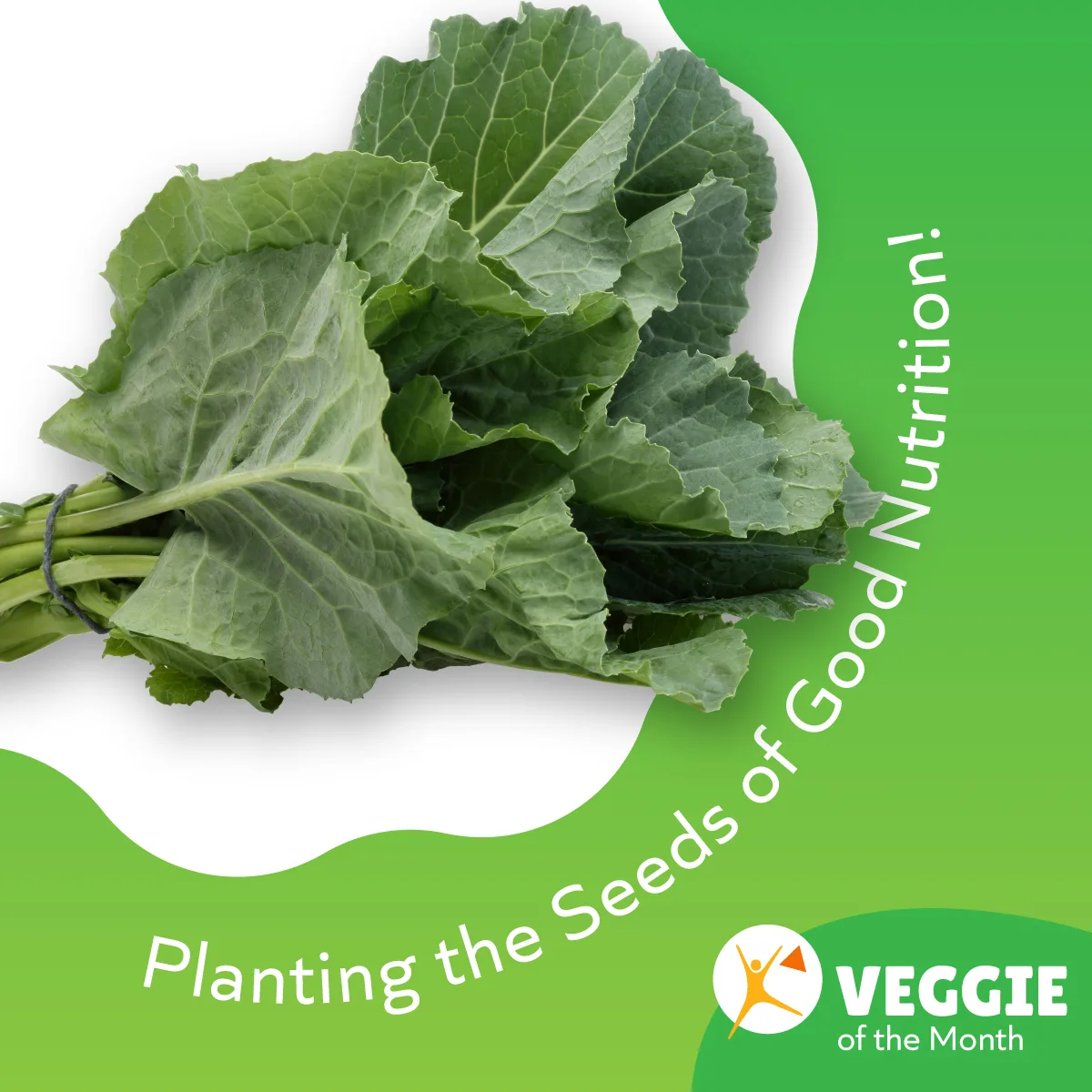When the temperature starts rising in anticipation for summer, it’s time to celebrate the nutritional powerhouse that is collard greens. Bursting with flavor and packed with essential nutrients, collard greens are a versatile, leafy vegetable that deserves a special place on your plate this May.
Collard Greens:
Collard greens are a member of the cruciferous vegetable family, renowned for their health-promoting properties. Rich in vitamins, minerals and antioxidants, collard greens offer a myriad of benefits for overall well-being. Take a closer look at this leaf green’s nutritional profile:
- Vitamin A, C and K: Support immune function, bone health and cell regeneration.
- Folate: Found mainly in dark leafy greens, folate is important for red blood cell formation and healthy cell growth and function.
- Manganese: Aids in the formation of strong bones, blood clotting and a healthy immune system.
- Antioxidants: Beta-carotene, lutein and zeaxanthin help combat oxidative stress and reduce inflammation in the body.
Did You Know?
- Collard greens have a rich culinary heritage, dating back centuries in Southern cuisine. Traditionally simmered with smoked meats or seasoned with vinegar and spices, collard greens are a beloved staple in soul food and comfort cooking.
- In African American culture, collard greens are viewed as a symbol of prosperity and good fortune, especially when served alongside cornbread and black-eyed peas on New Year’s Day.
Selecting the Freshest Collard Greens
- Vibrant Color: Look for collard greens with vibrant, dark green leaves. Avoid wilted or yellowing leaves, as they indicate age and loss of freshness.
- Crisp Texture: Opt for collard greens with firm stems and crisp leaves. Avoid bunches that appear limp or have signs of wilting.
Storing Collard Greens for Optimal Freshness
- Refrigeration: Store in the refrigerator crisper drawer to maintain freshness. Wrap them loosely in a damp paper towel or place them in a perforated plastic bag to prevent wilting.
- Use Within a Week: Collard greens are best when consumed within a week of purchase. As they age, they may become bitter and lose their vibrant color and nutritional value.
Expand Your Culinary Palette with Collard Greens
From classic Southern recipes to innovative culinary creations, collard greens offer endless possibilities in the kitchen. Here are a few ideas to inspire your culinary adventures:
- Classic Collard Greens: Simmer collard greens with smoked ham hocks, onions and garlic for a soul-warming side dish that pairs perfectly with cornbread.
- Collard Green Wraps: Use collard green leaves as a nutritious alternative to tortillas or wraps. Fill them with quinoa, roasted vegetables and your favorite protein for a wholesome and satisfying meal.
- Sautéed Collard Greens: Lightly sauté collard greens with olive oil, garlic and red pepper flakes for a quick and flavorful side dish. Finish with a squeeze of lemon juice for added brightness.
- Collard Green Chips: Bake collard green leaves until crispy to create nutritious and addictive chips. Season with sea salt, black pepper and nutritional yeast for a guilt-free snack.
Recipe: Southern-Style Collard Greens
Ingredients:
- 1 bunch collard greens, stems removed and leaves chopped
- 4 slices bacon, diced
- 1 onion, diced
- 3 cloves garlic, minced
- 2 cups chicken or vegetable broth
- 1 tablespoon apple cider vinegar
- Salt and black pepper, to taste
- Pinch of red pepper flakes (optional)
- Hot sauce, for serving
Instructions:
- In a large pot or Dutch oven, cook the diced bacon over medium heat until crisp. Remove the bacon from the pot and set aside, leaving the rendered fat in the pot.
- Add the diced onion to the pot and sauté until softened and translucent, about 5 minutes. Add the minced garlic and cook for an additional minute until fragrant.
- Add the chopped collard greens to the pot, stirring to combine with the onions and garlic. Pour in the chicken or vegetable broth and apple cider vinegar, then season with salt, black pepper and red pepper flakes, if using.
- Bring the mixture to a simmer, then reduce the heat to low and cover the pot. Let the collard greens cook, stirring occasionally, for about 45 minutes to 1 hour, or until tender and flavorful.
- Once the collard greens are cooked to your desired consistency, taste and adjust the seasoning as needed. Serve the collard greens hot, garnished with the crispy bacon and accompanied by hot sauce on the side.

